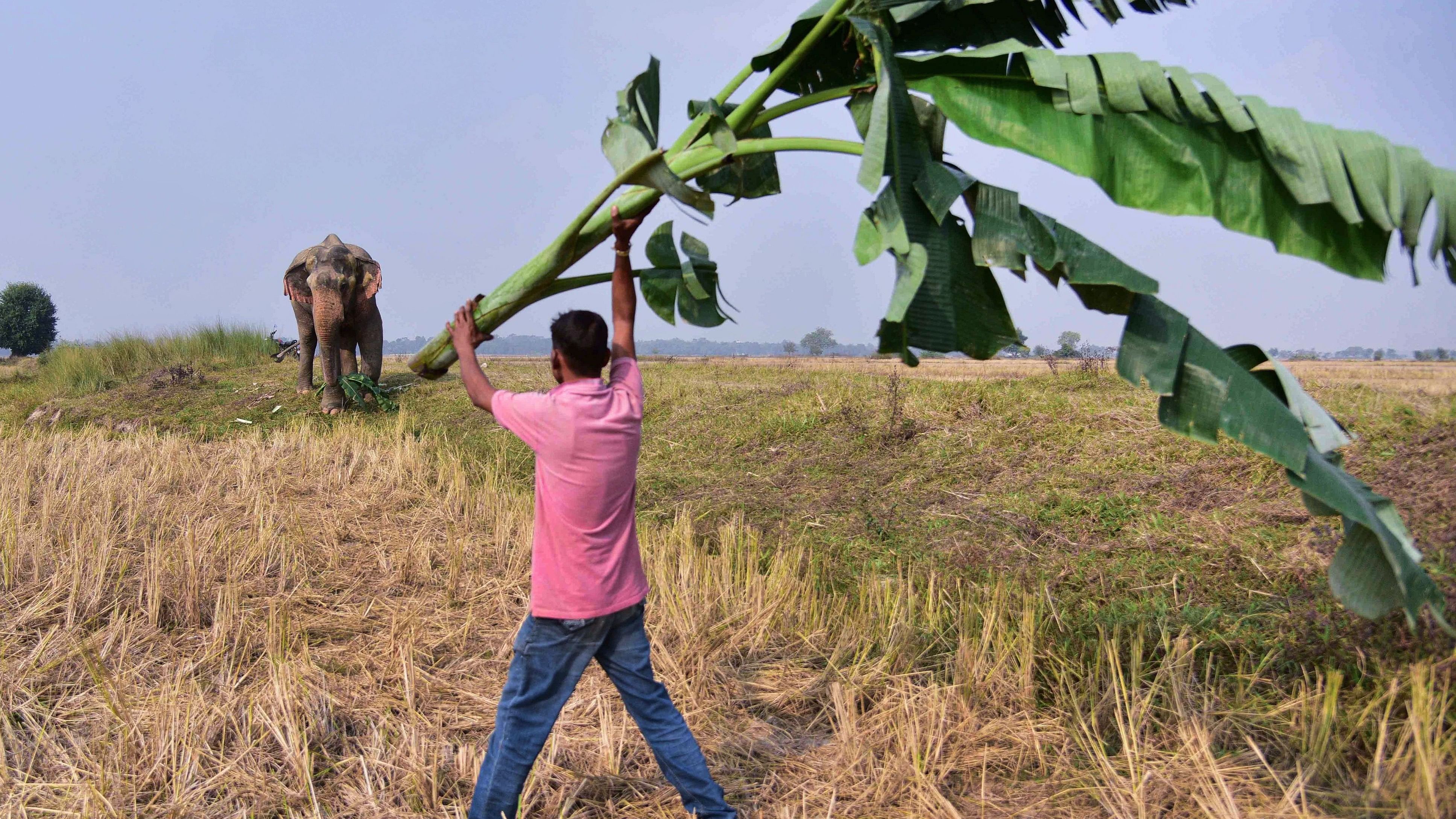
Representative image
Credit: PTI Photo
Karnataka has recorded 618 deaths due to human-wildlife (HW) conflict between 2010–2011 and 2023–2024. According to the Karnataka Forest Department (KFD), one person is killed in Karnataka per week.
Reports suggest that most of these conflicts occur in Kodagu, Hassan, and Chikkamagaluru, districts that were once forested areas but are now dominated by coffee and tea plantations.
Human interference has disrupted animal habitats, impacting their ecological and behavioural patterns. This conflict is not between animals and human beings but arises from a struggle for space among the living.
The policy solution adopted by the Indian states seems particularly limited to compensation as a means to offset conservation and livelihood costs for communities near forests. In Karnataka, compensation is awarded inconsistently and arbitrarily due to the lack of a legal framework, making this subjective to bureaucratic processes.
A report by the Vidhi Centre for Legal Policy and Centre for Wildlife Studies, titled ‘Human-Wildlife Conflict in Karnataka,’ discusses how interactions between humans and wildlife can be managed through preventive and protection strategies. Preventive strategies aim to stop conflicts from occurring, while protective strategies such as compensation aim at effectively dealing with the outcome of the conflict but do little to prevent future conflicts.
In Kerala, the Kerala Rules for Compensation to Victims of Attack by Wild Animals 1980 exist; however, they are flawed. The lack of standardised procedures to objectively assess damages in cases of injury, loss of life, or property and convoluted bureaucratic procedures create bottlenecks in granting compensation.
Rule 4 specifies that victims of the conflict have to file an application with the Divisional Forest Officer/the Game Warden, or the Wildlife Preservation Officer. The victim is also mandated to simultaneously file the application before the Forest Range Officer/the Assistant Wildlife Preservation Officer.
The Forest Range Officer/the Assistant Wildlife Preservation Officer must conduct an inquiry and forward the application with their recommendations to these officers. Thereafter, either of the three officers shall pass a compensation order. This bureaucratic procedure will lead to inordinate delays owing to complicated procedures and far too many officers, holding up the necessary relief.
The existence of compensation rules in Kerala has not necessarily precluded the occurrence of HW conflicts, with nine lives lost in the past three months.
A study in Rajasthan suggests that compensation laws fail to cover all social and economic costs experienced by households. For example, a peculiar provision under the Kerala rules also delineates a person who owns a gun licence for crop protection as ineligible for compensation. This creates structural difficulties in obtaining equitable compensation, as without access to technology and the latest warning systems, it is impossible to predict the occurrence of conflicts. Obtaining the relevant technology in this case presents an economic cost. This calls for a hybrid model of several components to address the issue holistically.
Why a hybrid model?
Compensation alone cannot solve the issue of human-wildlife conflict. A study reveals the need to streamline the assessment of compensation, which varies based on the animal involved. For instance, the cost of damage caused by elephants is higher than the cost of damage caused by pigs.
The solution needs to move towards a multi-dimensional approach to cover the entire spectrum of costs incurred in conflict situations. A hybrid solution should include a robust compensation law and an annual pay-out system based on entitlements, wherein households experiencing a net loss in agricultural production or allied fields should be able to offset certain conservation costs, etc. Research from Zimbabwe suggests non-monetary solutions, like planting chilli to reduce elephant-related crop loss.
Introducing a wildlife cess on industrial projects and eco-resorts near forest areas could fund a monetary pool for crop insurance pay-outs. The cess could fund the add-on coverage under the Pradhan Mantri Fasal Bima Yojana. The applicable notional premium borne by the farmer can be funded through the cess.
Amid the frequent incidents of human-wildlife conflict in states such as Karnataka and Kerala, it is essential to develop new-age solutions to the problem at hand. As recommended by the parliamentary standing committee to the Wildlife Amendment Bill, 2021, human-wildlife conflict is a complex issue and requires legislative backing to create structured and uniform responses.
(Sneha Priya Yanappa is a Senior Resident Fellow and Prathiksha Ullal is a Research Fellow, Vidhi Centre for Legal Policy, Bengaluru)